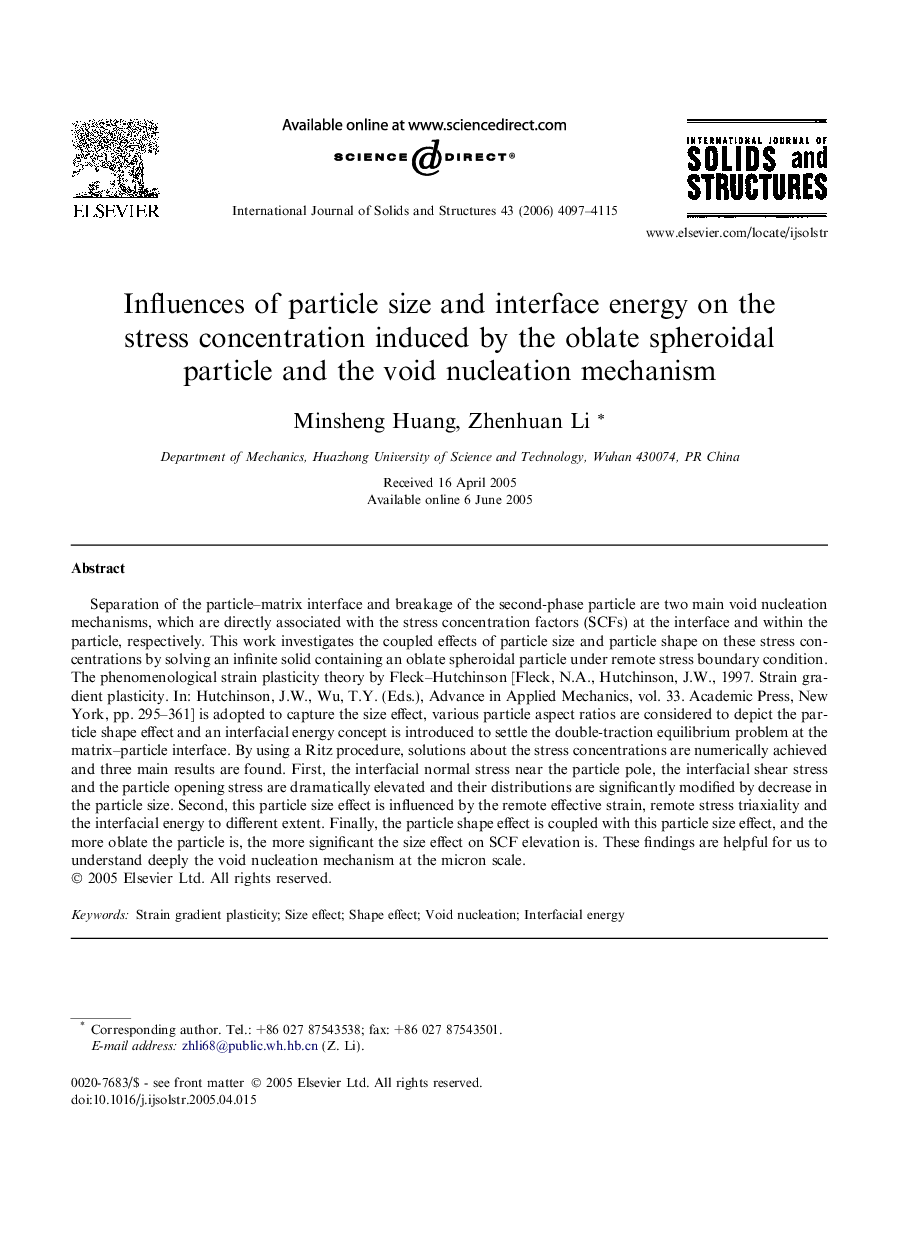| Article ID | Journal | Published Year | Pages | File Type |
|---|---|---|---|---|
| 280544 | International Journal of Solids and Structures | 2006 | 19 Pages |
Separation of the particle–matrix interface and breakage of the second-phase particle are two main void nucleation mechanisms, which are directly associated with the stress concentration factors (SCFs) at the interface and within the particle, respectively. This work investigates the coupled effects of particle size and particle shape on these stress concentrations by solving an infinite solid containing an oblate spheroidal particle under remote stress boundary condition. The phenomenological strain plasticity theory by Fleck–Hutchinson [Fleck, N.A., Hutchinson, J.W., 1997. Strain gradient plasticity. In: Hutchinson, J.W., Wu, T.Y. (Eds.), Advance in Applied Mechanics, vol. 33. Academic Press, New York, pp. 295–361] is adopted to capture the size effect, various particle aspect ratios are considered to depict the particle shape effect and an interfacial energy concept is introduced to settle the double-traction equilibrium problem at the matrix–particle interface. By using a Ritz procedure, solutions about the stress concentrations are numerically achieved and three main results are found. First, the interfacial normal stress near the particle pole, the interfacial shear stress and the particle opening stress are dramatically elevated and their distributions are significantly modified by decrease in the particle size. Second, this particle size effect is influenced by the remote effective strain, remote stress triaxiality and the interfacial energy to different extent. Finally, the particle shape effect is coupled with this particle size effect, and the more oblate the particle is, the more significant the size effect on SCF elevation is. These findings are helpful for us to understand deeply the void nucleation mechanism at the micron scale.
